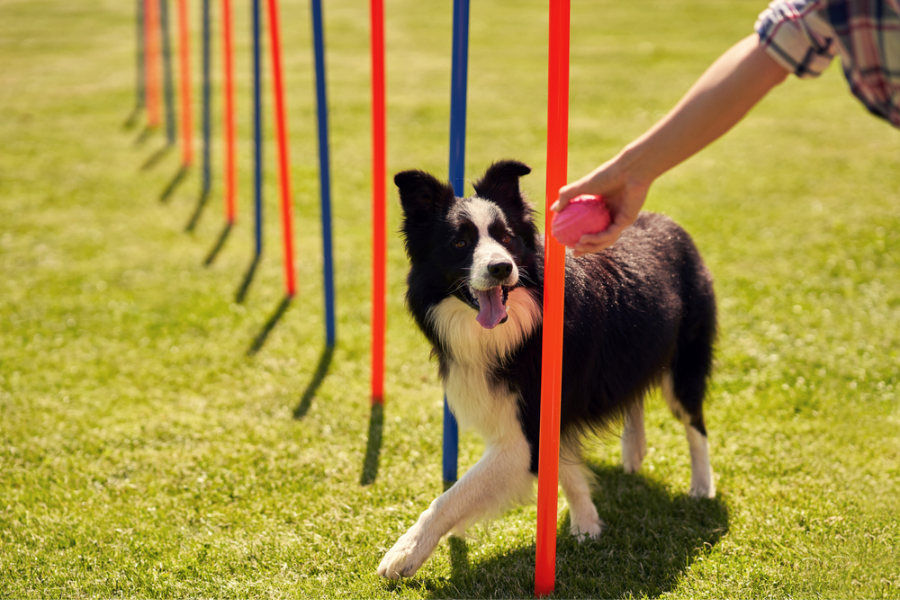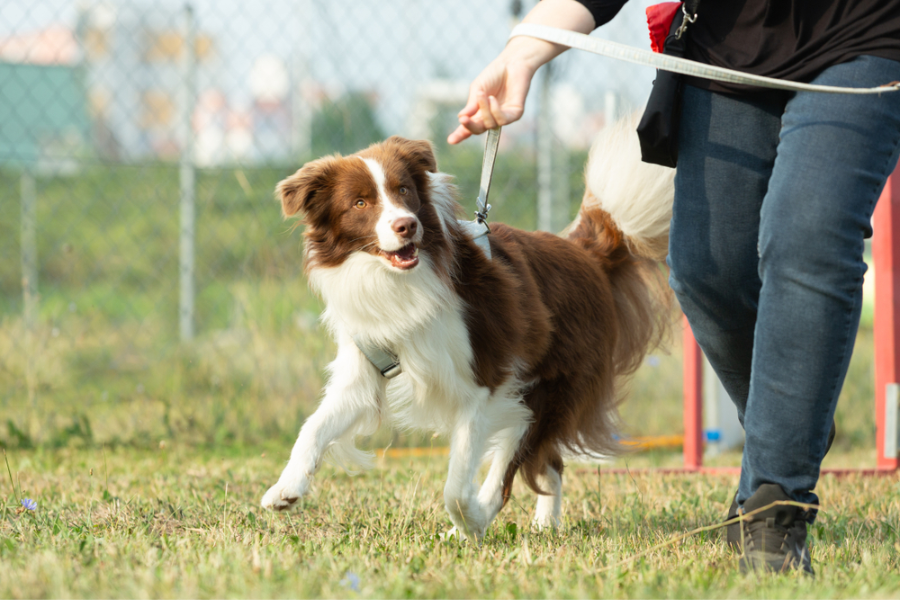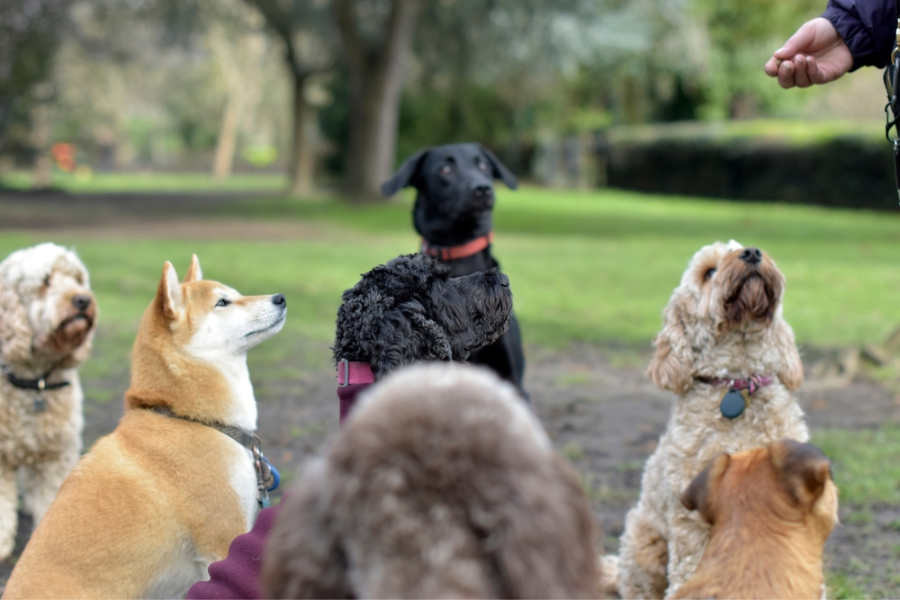Is Sending Your Dog For Training A Good Idea? – Explore The Pros And Cons
Introduction
Ever thought about sending your dog to training school? Picture this: chewed-up shoes, never-ending games of barking excessively in the living room—this dreaded realization makes anyone ponder if professional help is the answer. This question pops up in online forums and dog parks alike: “Is sending your dog for training a good idea?”
Well, we’re here to give you the scoop! In this article, we will discover the advantages and pitfalls of enrolling your dog in training. Understanding how training can strengthen your bond and recognizing when it might not be the best fit for your four-legged pal.
We’ll offer insights, share experiences, and provide practical tips you need to make an informed decision about your dog’s training journey.

Why Do People Send Their Dogs Away for Training?
Training a dog can be tricky. That’s why many pet parents turn to the pros. Let’s chat about why this happens.
Behavioral Issues
First, some dogs have problems that need a pro’s touch. They know all about dog behavior and can help with issues like fear, loud barking, separation anxiety, or destructive behavior.
Professional trainers have the experience and skills to know how to help dogs feel and behave better.
Specialized Training
Professional programs provide invaluable specialized training for dogs that need to fulfill certain duties, such as assistance dogs, search and rescue dogs, and sporting dogs.
They can tailor training methods to each dog’s personality and learning style for optimal results.This can be beneficial for first-time dog owners or those unfamiliar with dog training techniques.
Lack of Time for Training at Home
Lastly, training takes time and know-how. Some dog owners may not have the time to train their dogs due to work, family commitments, or other responsibilities. And training isn’t always easy. It’s not just about teaching your dog to sit or stay. It’s about understanding how your dog thinks and learns. Sending their dog to a training program ensures that their pet receives consistent and regular training that they might not be able to provide.
Is Sending Your Dog For Training A Good Idea?
Below, we look into the advantages and drawbacks of “board and train” programs, backed by expert opinions and available data.
| Advantages | Disadvantages |
| Expert-led behavioral correction | High training costs |
| Enhanced dog socialization | Lost owner-pet bonding opportunities |
| Time-saving for busy owners | Risk of negative training experiences |
The Advantages
1. Access to Professional Expertise
Professional dog trainers who have devoted their lives to studying canine behavior generally run board and training programs. According to the APDT, trained professionals can more easily spot and correct undesirable behaviors in dogs than their lay counterparts.
2. Socialization Opportunities
When staying at a boarding facility, dogs are exposed to a diverse group of dog and human companions. To enhance sociability and decrease nervousness or aggression when meeting new animals and humans, this sort of introduction is essential.
3. Convenience for Owners
Board and train programs provide a practical alternative to the time-consuming nature of daily training sessions for dog owners who have busy schedules and need to find a way to train their dogs.

The Disadvantages
1. High Costs
There may be a big cash investment needed for training dog services. The research conducted by Rover.com found that these programs may cost several thousand dollars, far more than community obedience lessons or do-it-yourself techniques.
2. Missed Bonding
Training is not just about teaching the dog; it’s also about educating the owner. When owners are not involved in the training process, they may miss out on learning how to effectively communicate with their pet.
The Humane Society has noted that the bond between dog and owner is crucial, and long separations can sometimes strain this relationship.
3. Potential for Negative Experiences
The quality of various training courses varies greatly. Additional behavioral problems may result from instances of negative reinforcement or poor care. It’s vital to properly study any training facility and their practices.
When Should You Send Your Dog To Obedience School?
Determining the ideal time to enroll your furry friend in such a program can be tricky. Let’s explore the key indicators and expert insights to help you make this important decision.
Early Training: The Puppy Phase
Many trainers recommend starting obedience training as early as possible. After their initial vaccines are complete, puppies as young as eight weeks old can join puppy obedience training. According to the American Society for the Prevention of Cruelty to Animals (ASPCA), early socialization and puppy training lessons help to guarantee that your youngster develops into a well-adjusted, well-mannered adult.
Behavioral Red Flags
If your dog exhibits signs of aggression, such as persistent barking, jumping on people, or leash pulling, professional training can help. Behavioral issues are perhaps the most obvious sign that obedience school is necessary. For those who want to ensure their dog never develops problematic behaviors, obedience school can act as a preventive measure.
There’s no one-size-fits-all answer to when you should send your dog to obedience school. Dog training is a dual effort, requiring commitment from both the dog and the owner. With the right timing and approach, obedience school can be a rewarding experience that strengthens the bond between you and your canine companion.

What To Consider When Sending Your Dog Away To Train
So, you want to send your dog to training school? Great! But there are a few things we should think about first. Like what kind of training your dog needs, when’s the best time to start, and how to pick the best school for your furry friend.
Types of Training for Your Dog
Not all training is the same. There’s obedience training, behavioral training, and even job training for dogs. Let’s break them down.
Obedience Training
This is all about teaching your dog to listen to you. Simple commands like sit, stay, and heel are the name of the game. It’s all about keeping your dog safe and well-behaved.
Suitable Breeds: breeds known for their eagerness to please and intelligence, such as Labrador Retrievers, Border Collies, and German Shepherds, tend to excel in obedience training.
Behavioral Training
Got a dog that’s a bit too jumpy or barks too much? Behavioral training can help with that. It’s all about fixing bad habits and making sure your dog is a good neighbor.
Suitable Breeds: Breeds with high energy levels and those prone to anxiety, like Jack Russell Terriers or Dalmatians, may benefit more frequently from this type of training.
Job Training for Dogs
Some dogs have jobs! They can be trained to help find missing people, assist people who need help, or even work with the police. But this is usually for certain breeds or dogs with special skills.
Suitable Breeds: Breeds like Bloodhounds, Saint Bernards, and Belgian Malinois are known for their tracking abilities and endurance.
Picking the Right School for Your Dog
Choosing the right school for your dog is super important. You’ll want to look at the school’s reputation, what kind of training they offer, and if the place is a good fit for your dog.
What to Look for in a School
Check out the school’s reputation and the trainers’ skills. Make sure they offer the right kind of training for your dog. And don’t forget to check if the place is clean and safe for your dog.
Watch Out for Bad Reviews
Be careful if a school is secretive, uses harsh training methods, or has bad reviews. Other things to watch out for are unqualified trainers, dirty facilities, or if they don’t give each dog enough attention.

Does Sending Your Dog Away For Training Work?
Factors That Affect the Success of Board and Train Programs
| Factor | Impact on Success |
| Quality of the Program | Dependent on trainer expertise and use of positive reinforcement. |
| Dog’s Temperament | Varies with dog’s adaptability and sociability. |
| Consistency Post-Training | Crucial for retaining learned behavior; requires owner reinforcement. |
| Owner Involvement | Essential for sustained results; owners must learn and apply training. |
| Behavioral Issues | May need more targeted or ongoing training beyond standard programs. |
| Socialization and Specialized Training | Ideal for social skills and specific tasks; may be hard to teach at home. |
Things to Keep in Mind
Training Can Be Tough
Training can be hard for some dogs. It’s like the first day at a new school. But don’t worry, there are ways to make it easier. As there are methods to smooth the path, such as understanding what it means when dogs show their teeth, which can be a sign of stress that needs addressing during training.
We can help our dogs get used to it little by little. Also, good trainers make learning fun, not scary.
Not All Training Centers are Good
Some training centers might not be right for your dog. It’s like picking a school – you want to find a good one. So, we need to pick a place where the trainers know what they’re doing and treat dogs kindly. Your dog might prefer the best dog toys for nibblers could be part of training.
Bad Habits Can Happen
Sometimes, dogs can pick up bad habits during training. It’s like when a kid learns a naughty word and keeps saying it. But if the training is done right, this won’t happen. Good trainers make sure dogs learn the right things in the right way.

Case Study: Successful Training Stories
We want to share some heartwarming stories about dogs that have truly benefited from professional training. Let’s dive into a couple of them.
First, let’s talk about Max, a lively Golden Retriever. Max was a handful at home, always full of beans and causing a ruckus. His family tried their best, but they just couldn’t keep up with him. They realized they needed help and decided to explore e-collar training for dogs with a professional. The results were night and day. The trainer taught Max how to use his energy in a good way. Max learned to listen and his naughty behavior went down a lot. His family started to enjoy their time with him more, without worrying about him making a mess.
Next, meet Bella, a Shih Tzu who hated being alone. Every time her family left the house, Bella would get really upset. She would bark non-stop and sometimes even hurt herself. Her family was at their wit’s end. They decided to get professional help. It was clear that Bella could benefit from learning how to calm a hyper dog, a strategy that might ease her anxiety. It took some time, but Bella started to feel better. Her family was so happy to see Bella more relaxed.
These stories show how professional training can really help dogs and their families. It’s not just about teaching good behavior. It’s also about making dogs happier and healthier. And it’s about making life better for their families, too. So yes, sending your dog for training can be a great idea!
While they can provide a solid foundation of training, they are not a “magic fix,” as stated by the American Kennel Club (AKC) and other canine behavioral specialists. They are most effective when utilized as a component of a comprehensive, on-going training strategy that includes the participation of the dog’s family members.

Conclusion
We’ve dug deep into dog training. It’s clear that it’s a ‘yes and no’ answer. Sending your dog away for training can work, but it shouldn’t be viewed as a standalone solution. The most effective approach to dog training is one that involves the pet owner and is based on consistency and positive reinforcement. It can boost good behavior, help dogs make friends, and make them happier.
But, remember, not all training places are top-notch. Some might not give your dog the care they need. Each type of training is designed to enhance the dog’s natural abilities and to foster a relationship of mutual respect and understanding between dogs and their handlers.









